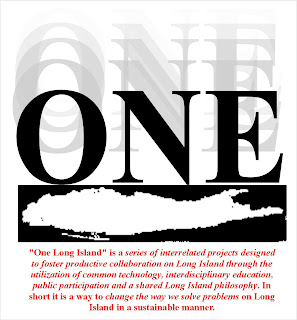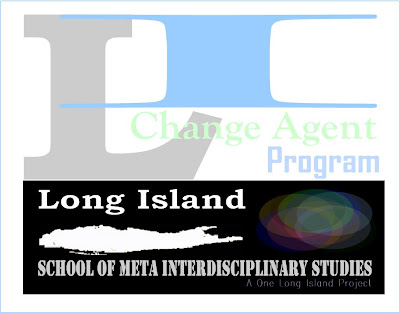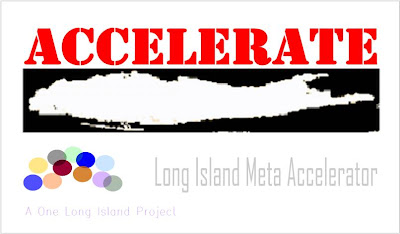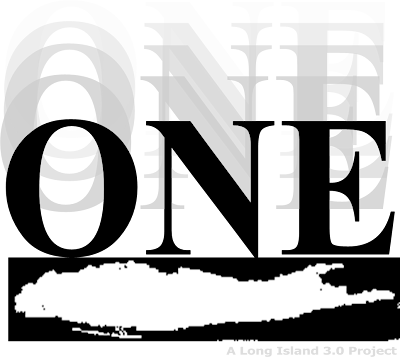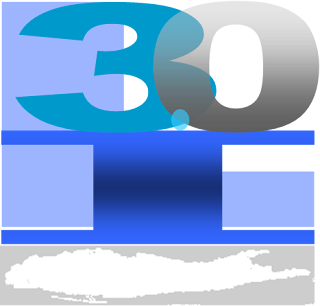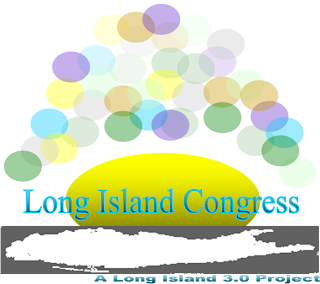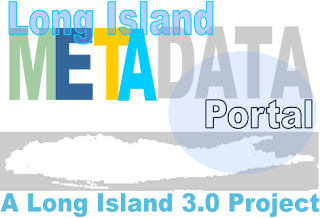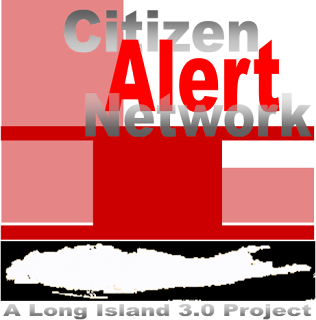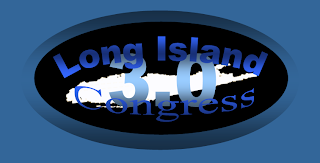How about a Long Island Association of Special Districts similar to this, this, this, and this among others?
Clearly many folks across the nation like the smaller structure of local government, not just those of us on Long Island. Giving a "super structure" to the many various districts that allows them to remain autonomous but act collaboratively and more effectively may be what becomes the most efficient way of handling the current situation.
I was watching a local talk show this past Saturday when someone mentioned the Tom Friedman book, The World is Flat (which I read over this past summer). The host was talking about the value of being a "generalist" and how a traditional liberal arts education may now be in demand once again.
I agree up to a point. Yes it is good to be well rounded and well read. Yes we need folks who understand how to "synthesize" diverse elements and bring them together for a common purpose. But we need more.
We need people trained to think broadly with more than a liberal arts education. Students must be taught how to actually facilitate the synthesis. This is one of the foundational points of our proposed "Long Island School of Meta-Interdisciplinary Studies."
Yes, think broadly and creatively, but direct it towards, or at least reference real projects that have an impact in your sphere of interest.
How about a Long Island Service Oriented Architecture Project? Thanks to John Murcott of 411Karma for the tip.
Tuesday, October 30, 2007
Wednesday, October 24, 2007
Tuesday, October 23, 2007
Long Island Plasma Converter Project
How about a bunch of these on Long Island (and New York as well)?
Solves Long Island's garbage problem and helps with the electric rates as well.
May be a good candidate for the new Advanced Energy Research and Technology Center in Stony Brook.
Long Island Innovation Council: Part One

What if every large municipality, and maybe consortia of smaller ones, create a "Department of Innovation" which then places a member on a "Long Island Council of Innovation" in concert with the major (and consortia of minor) non-profit, business and other relevant Long Island Organizations? Sort of a sub-division and natural extension of the Long Island Congress concept.
What if, before government and other funding organizations of all types support a project, the project must comply with the "One Long Island" constitution and guidelines?
I'm not a big fan of mandates and bureaucracy, but they do and will continue to exist (although hopefully in a limited context). Why not use them to help implement the "One Long Island" project which will in turn lessen the need for mandates and bureaucracy over time?
As we've stated previously, there is plenty of money already "in the system" to help restructure Long Island and set it up for a bright future.
More in Part Two.
Now for something a little different ...
I was cleaning out the house a few months ago when I came across boxes and boxes of old tapes and sheet music I had, quite frankly, forgotten about.
This was the byproduct of a portion of my youth when I was determined to write the next great American Symphony, or Jazz Standard or Rock Classic or ... well suffice it to say there is tons of stuff all recorded or written the old fashioned way. A real chore.
I started to look around at what was available to the new composers and musicians out there and was pretty impressed. So I purchased some software (Acoustica) and am in the process of going through hours of old stuff and practicing a little to get my "chops" back so I can record or re-record half finished or never recorded projects.
Here is a "study" for a symphony that real life has prevented me from completing.
There's a Podcast Player in sidebar of the Long Island Idea Factory with some other demos (some complete, some not) of stuff I was working on 25 to 30 years ago or more. They just happened to be the first things my hands touched through the dust ... I'll post more as time permits. There's so much it could be a full time job.
Maybe when I retire ...
Monday, October 22, 2007
Thank you, but I can think for myself: Part Two
We previously spoke about how Web 2.0 (and 3.0) technologies are changing the very nature of our ability to gather information outside the "traditional" sources.
Another important change, and one that we've touched on previously as well, is the ability of organizations and individuals to be able to analyze data on their own as well.
Currently, since there is no uniformity to the manner in which data is available on Long Island (and New York and elsewhere), we are subject to various organizations and individuals using selective data and queries to come to conclusions that may or may not be accurate. Even if we give everyone the benefit of the doubt and say that the analyses are done with no "hidden" agenda or predetermined conclusions, it is often times difficult to believe or trust the results.
This problem is then magnified by the "lemmingization" of groups and individuals seeking to use the data, conclusions and static reports to promote their agenda or cause, thus multiplying the distribution of what might be inaccurate information and conclusions.
So how do we fix this problem?
In addition to all the "fixes" we've proposed previously on this site under the "One Long Island" series of projects, we must also have the ability to create our own "ad hoc" query module or "meta query" module for the "Long Island Metadata Portal" and related projects.
It is important that we have the ability to ask different questions than the "established" organizations and individuals mat ask, but it is also important that all questions query the data in a meta format so that we avoid the "temptation" to use only that data and ask those questions which are most advantageous to our position or organizational mandate.
This again is a type of "Long Island Scientific Methodology" we spoke about in previous posts.
So if we posit the theory that most individuals and organizations feel that they are powerless to create large scale change on their own and also, that they, at least in part, fear most change due to a lack of clear information or a misunderstanding or distrust of the available information, then we may conclude that we as a collective regional body allow an environment for stagnation to exist by not creating a new environment for the dynamic and clear exchange of information and ideas.
So if we posit the theory that most individuals and organizations feel that they are powerless to create large scale change on their own and also, that they, at least in part, fear most change due to a lack of clear information or a misunderstanding or distrust of the available information, then we may conclude that we as a collective regional body allow an environment for stagnation to exist by not creating a new environment for the dynamic and clear exchange of information and ideas.
More in Part Three.
Friday, October 19, 2007
Friday random thoughts ...

Another way to look at the "One Long Island" project is as a creative enterprise or "ensemble."
Much as a great jazz orchestra or combo creates "individual freedom of expression" within a flexible "structure" of some type, we may look at our project in the same way.
We spoke in previous posts about how creating a dynamic Long Island also creates an "inter-organizational/individual rhythm" that helps to prevent "stagnation" of thought and action on Long Island.
We may have multiple organizations and individuals from different disciplines "playing in the same orchestra" at the same time or in sections or varied subgroups and at times soloing while the group supports their effort. The point is that organizations and individuals must sometimes sublimate their own desires for the success of the "composition."
One Long Island will have many composers and many opportunities for individual creativity in what can become the "Grand Long Island Composition."
This weekend listen to some Charles Mingus, Ornette Coleman, Thelonious Monk, or any great jazz composer and musician and listen to how the parts work together. It's actually good practice for learning to understand any new approach whether musical, verbal or written. The idea's the thing.
As I stated previously, we need people from all disciplines to form a "complete picture" of a new and dynamic Long Island, and learning to think abstractly and about things that you would not normally come into contact with are major components in learning how to create a collaborative environment.
Oh and by the way if you normally do listen to Mingus, Monk etc, try listening to Hank Williams of George Jones or ...
... the point is listen or read or do something (positive) you wouldn't normally do.
Be creative. Think differently. Challenge yourself and those around you in a positive, productive manner. Remove barriers ... I'm starting to sound a little like a motivational speaker at a mandatory seminar ... I'll stop now. You get the idea.
Long Island needs many creative minds and mass collaborative action to be successful.
Monday we get back to some more specific recommendations and yes, sad to say for some of you, additional graphics.
I'm attempting as many different approaches as possible to convey the "One Long Island" series of concepts to as many different folks as I can. Some hit the mark, some do not.
Suggestions are always welcome.
Wednesday, October 17, 2007
Tuesday, October 16, 2007
Long Island 3.0 Open Code Library, Build It - Connect: Part One

Part of the mission of "One Long Island" is to make it easy for all Long Islanders to develop and utilize tools that assist the process of a more dynamic and collaborative Long Island.
These tools may already be in existence or they may be developed as the need arises. The point is to make them available and easy to use thus unlocking the creativity of as many different Long Islanders as possible from as many disciplines as possible.
More in part two.
Long Island Internet Public Library: Part One

Based upon this idea and really just another way to conceptualize our Long Island Metadata Portal project.
Although the more I think about it, I suppose a good case could be made for the Long Island Internet Public Library being a sub-component of the Long Island Metadata Portal. Something similar here but I can't quite determine the scope of the project. Might be a useful building block in the overall "One Long Island" project however.
We'll explore that idea in later posts.
"One Long Island" : The Short Version
Someone asked me the other day to state what I was trying to accomplish with the "One Long Island" concept. You know, the old "give it to me five minutes or less" routine.
Simply stated "One Long Island" is a series of interrelated projects designed to foster productive collaboration on Long Island through the utilization of common technology, interdisciplinary education, public participation and a shared Long Island philosophy. In short it is a way to change the way we solve problems on Long Island in a sustainable manner.
There. That was less five minutes wasn't it?
Now back to our regularly scheduled program ....
Simply stated "One Long Island" is a series of interrelated projects designed to foster productive collaboration on Long Island through the utilization of common technology, interdisciplinary education, public participation and a shared Long Island philosophy. In short it is a way to change the way we solve problems on Long Island in a sustainable manner.
There. That was less five minutes wasn't it?
Now back to our regularly scheduled program ....
Monday, October 15, 2007
Long Island "Info Grid": Part One

I was watching one of the local talk shows this past weekend and Kevin Law the new head of LIPA was on talking about the future of energy on Long Island.
He was saying that the best way of keeping costs down at present is through conservation but that it is difficult to get the message across to Long Islanders in a way that will promote real change.
It just reinforced my belief in the real need for a fundamental change in the way we communicate on Long Island. Time and time again we hear "if only Long Islanders knew" we could make great progress on ... (pick the subject).
So another way to look at the "One Long Island" series of projects is as a Long Island Information Grid wherein information is absorbed and transmitted to all those attached to the "grid." Sort of like this and sort of what we were talking about in 1993 but not exactly like either.
More in Part Two.
Friday, October 12, 2007
Long Island Dublin Core Metadata Initiative: Part One
"The Dublin Core Metadata Initiative is an open organization engaged in the development of interoperable online metadata standards that support a broad range of purposes and business models. DCMI's activities include work on architecture and modeling, discussions and collaborative work in DCMI Communities and DCMI Task Groups, annual conferences and workshops, standards liaison, and educational efforts to promote widespread acceptance of metadata standards and practices ..."
We've referenced the "Dublin Core Metadata Initiative" in a number of our previous posts as one possible way to help "tie all the information" together on Long Island (Long Island Metadata Portal etc.).
It seems to be a good fit for our "One Long Island" project in that it has a track record of success and is based upon an open architecture.
The key to "bringing Long Island together" is not through mandates, but rather, as we've stated before, through collaboration and flexibility.
A sort of "make it available and easy to participate it and they will participate" approach.
It looks as though Dublin Core can help us achieve the type of large scale data coordination we are projecting in "One Long Island."
We'll follow up to verify.
Also, here's a nice site explaining Web 3.0 (LI 3.0).
We've referenced the "Dublin Core Metadata Initiative" in a number of our previous posts as one possible way to help "tie all the information" together on Long Island (Long Island Metadata Portal etc.).
It seems to be a good fit for our "One Long Island" project in that it has a track record of success and is based upon an open architecture.
The key to "bringing Long Island together" is not through mandates, but rather, as we've stated before, through collaboration and flexibility.
A sort of "make it available and easy to participate it and they will participate" approach.
It looks as though Dublin Core can help us achieve the type of large scale data coordination we are projecting in "One Long Island."
We'll follow up to verify.
Also, here's a nice site explaining Web 3.0 (LI 3.0).
Thursday, October 11, 2007
Long Island "Idea TV": Part One
Wednesday, October 10, 2007
Tuesday, October 9, 2007
More helpful information ...
Developing a common language:
Having a common language to talk about the business can be very helpful in creating organizational alignment. “Some of the initiatives I’ve been involved with have taken three years to implement. What I’m seeing is impatience.They want to see the ROI right away and I understand that but they are not putting in the infrastructure for sustainment. So as soon as the project team walks away then the inspection goes away.” For one organization, this was achieved by putting a large number of employees through National Quality Institute training. This happened in parallel with a major change initiative led by a project team. “Now, three years later, we have health and safety consultants talking about the revenue implications of dealing with the client…. They are focused now and speaking the same language. It’s been a fairly effective combination of the formalized training through a structured program and having a pushy team …overcoming any obstacles. Because there was definitely strong resistance from certain quarters within the organization.”
"Robert Rhouda, of the University of St. Thomas in Minneapolis, Minnesota, provides a specific, itemized definition of large-scale interventions for organizational change, in his paper, Background and Theory for Large Scale Organizational Change. According to Rhouda, "The major features of large-scale, real-time change management process include:
the theory-base uses less action research and discrepancy theory, and focuses on application of systems theory the data base source is no longer internal to the organization, but now involves both the organization and its environment (an open-systems approach)
the data base, which formerly had limited availability, is now widely shared throughout the organization time: what was formerly a slow "waterfall" process is now a fast, quick response which results in immediate action taking place learning moves from the individual or unit to the whole organization the responsibility and accountability moves from senior management to a mixture of senior management plus the whole system
the consultant role, formerly reserved for data collection and feedback, now also includes structures and facilities for data analysis and action planning the change process moves from incremental change to fundamental, organization-wide change"
Having a common language to talk about the business can be very helpful in creating organizational alignment. “Some of the initiatives I’ve been involved with have taken three years to implement. What I’m seeing is impatience.They want to see the ROI right away and I understand that but they are not putting in the infrastructure for sustainment. So as soon as the project team walks away then the inspection goes away.” For one organization, this was achieved by putting a large number of employees through National Quality Institute training. This happened in parallel with a major change initiative led by a project team. “Now, three years later, we have health and safety consultants talking about the revenue implications of dealing with the client…. They are focused now and speaking the same language. It’s been a fairly effective combination of the formalized training through a structured program and having a pushy team …overcoming any obstacles. Because there was definitely strong resistance from certain quarters within the organization.”
"Robert Rhouda, of the University of St. Thomas in Minneapolis, Minnesota, provides a specific, itemized definition of large-scale interventions for organizational change, in his paper, Background and Theory for Large Scale Organizational Change. According to Rhouda, "The major features of large-scale, real-time change management process include:
the theory-base uses less action research and discrepancy theory, and focuses on application of systems theory the data base source is no longer internal to the organization, but now involves both the organization and its environment (an open-systems approach)
the data base, which formerly had limited availability, is now widely shared throughout the organization time: what was formerly a slow "waterfall" process is now a fast, quick response which results in immediate action taking place learning moves from the individual or unit to the whole organization the responsibility and accountability moves from senior management to a mixture of senior management plus the whole system
the consultant role, formerly reserved for data collection and feedback, now also includes structures and facilities for data analysis and action planning the change process moves from incremental change to fundamental, organization-wide change"
Interesting reading ...
"At a recent Wharton roundtable discussion on leadership and innovation, Wharton management professor Michael Useem, event moderator, initiated discussion by posing a general question: How are leadership and innovation linked? "How exactly do we put those two together? How do we lead in a way that generates innovation?" he asked, describing the synergy as "a kind of high-octane fuel we ought to get as much of as we can."
Read the entire article here (http://knowledge.wharton.upenn.edu/article.cfm?articleid=1569)
Read the entire article here (http://knowledge.wharton.upenn.edu/article.cfm?articleid=1569)
Friday, October 5, 2007
Thanks to the Long Island Press for the kind words ...
Citizen Journalists
Long Island Blogs Tackle Topics From Politics To Sports To Rude Behavior In The Hamptons...And Beyond
By Long Island Press Staff
"It's 2 a.m., and that pepperoni pizza isn't nearly as enjoyable as it was four hours ago. You click on your ungodly expensive cable/satellite TV system, and despite hundreds of channels, there is nothing to watch.
That mode of leisure exhausted, you boot up your computer, because billions of websites can't deny you enjoyment, can they? But even then, it can be hard to see the forest for the trees, as you might scan hundreds of uninspired and/or un-updated pages that make you wish you had settled for the salad.
Fear not. The citizen journalist has your back. From our own acid-tongued Chick Dubinsky to LI master maven Lou Savinetti (http://longislandideafactory.blogspot.com), they bring thoughts and news the mainstream press never could."
Read the entire article here:
http://longislandpress.com/main.asp?SectionID=2&SubSectionID=2&ArticleID=13617&TM=83529.21
Long Island Idea Bank: Part Two
Just as we proposed in the early 90s with a "Land Bank" for the Town of Oyster Bay (Oyster Bay 2000) as a means of protecting and preserving open space and redeveloping underutilized or improperly utilized parcels for the public good thus protecting and developing one of the Town's important "assets" we now look to the Long Island Idea Bank as a way of protecting and "developing" another important Long Island asset: our immense capacity for innovation and potential for productive collaboration. In short, our brainpower and ideas.
There is no doubt that Long Island possesses and has access to some of the finest minds on the planet. We have not, to date to any great extent, been able to marshall this ability for the collective good of all the residents on Long Island. An "idea bank" while not a new idea in itself. is a necessary component in the overall structure of the "One Long Island" project we are proposing in that there needs to be a central clearinghouse of ideas (in all stages of completion) for us to draw from and contribute to. We might also call it the Long Island Idea Library.
The Long Island Idea Bank concept, as all "One Long Island" projects must be viewed in concert with all the other components of our proposal. The idea is to collaborate and coordinate, not to continue to maintain separate disjointed static organizations or to create a new "super" or "meta" bureaucracy.
More in Part Three.
There is no doubt that Long Island possesses and has access to some of the finest minds on the planet. We have not, to date to any great extent, been able to marshall this ability for the collective good of all the residents on Long Island. An "idea bank" while not a new idea in itself. is a necessary component in the overall structure of the "One Long Island" project we are proposing in that there needs to be a central clearinghouse of ideas (in all stages of completion) for us to draw from and contribute to. We might also call it the Long Island Idea Library.
The Long Island Idea Bank concept, as all "One Long Island" projects must be viewed in concert with all the other components of our proposal. The idea is to collaborate and coordinate, not to continue to maintain separate disjointed static organizations or to create a new "super" or "meta" bureaucracy.
More in Part Three.
Thursday, October 4, 2007
Wednesday, October 3, 2007
Meta Regionalism: Part One
How far can we extend the "One Long Island" and "Long Island 3.0" concepts?
Can we envision the concept of inter-collaborative regional "meta organizations" both here in New York and elsewhere?
First, obviously, we need to prove our theories here on Long Island. But clearly, if structured properly, if inclusive enough, if we are able to "filter out" negative and destructive elements and focus on continually innovating, collaborating and "building bridges," there is really no theoretical end point.
It is almost as if we are creating a non-governmental based and voluntary "Virtual Federalism" or a "Meta Federalism" of sorts. Diversity creates multiple options and opportunities, but there is a recognition of a common "collaborative" organizational requirement for the common good. Now if we can only debate the issues without the overt personal attacks, we may actually be able to compete in the world in the long term.
Large scale change of a type we are proposing is similar to listening to an Ornette Coleman composition. At first listen it sounds completely arbitrary and disorganized. But the more you listen the layers of complexity reveal themselves and the organization, logic and beauty become evident.
We must train ourselves to think critically, but more expansively.
More in part two.
Can we envision the concept of inter-collaborative regional "meta organizations" both here in New York and elsewhere?
First, obviously, we need to prove our theories here on Long Island. But clearly, if structured properly, if inclusive enough, if we are able to "filter out" negative and destructive elements and focus on continually innovating, collaborating and "building bridges," there is really no theoretical end point.
It is almost as if we are creating a non-governmental based and voluntary "Virtual Federalism" or a "Meta Federalism" of sorts. Diversity creates multiple options and opportunities, but there is a recognition of a common "collaborative" organizational requirement for the common good. Now if we can only debate the issues without the overt personal attacks, we may actually be able to compete in the world in the long term.
Large scale change of a type we are proposing is similar to listening to an Ornette Coleman composition. At first listen it sounds completely arbitrary and disorganized. But the more you listen the layers of complexity reveal themselves and the organization, logic and beauty become evident.
We must train ourselves to think critically, but more expansively.
More in part two.
Tuesday, October 2, 2007
Training Long Island "Change Agents": Part One

9 Tips for Change Agents
Turner's role at XBS is that of 'chief change agent.' Here are her nine lessons for would-be change agents.
The job title on Chris Turner's business card simply reads "Learning Person."
"It's like 'citizen of the world,'" she says. "Ultimately my hope is that people in all parts of XBS will see themselves as Learning Persons."
As nonhierarchical as her job title sounds, Turner's role at XBS is that of "chief change agent." Here are her nine lessons for would-be change agents.
1. Be open to data at the start. "Even if you think you know what you're doing, chances are you don't know what you could be doing. Open up your mind to as much new thinking as you can absorb. You may find different and better ideas than the ones your organization started with."
2. Network like crazy. "There is a network of people who are thinking about learning organizations. I've found you can get in touch with them easily. People say to me, `I can't believe you talked with so-and-so! How'd you do it?' The answer is, I called him."
3. Document your own learning. "People in the organization need to see documentation for their own comfort. The smartest thing I did was to create a matrix of ideas from leading thinkers. I documented two categories of thinking -- the elements of a learning organization, and the pitfalls to avoid."
4. Take senior management along. Turner's own education included benchmarking trips to Saturn, Texas Instruments, Motorola, General Electric, and other companies known for their innovative approaches to learning. "Some of the people in the senior group were very skeptical," Turner says. "It helped to take them on these benchmarking trips to show them other companies that were actually doing some of the same learning practices."
5. No fear! "You've got to be fearless and not worry about keeping your job."
6. Be a learning person yourself. "Change agents have to be in love with learning and constantly learning new things themselves. Then they find new ways to communicate those things to the organization as a whole."
7. Laugh when it hurts. "This can be very discouraging work. You need a good sense of humor. It also helps if you've got a mantra you can say to yourself when things aren't going too well."
8. Know the business before you try to change anything. "I don't think you can do this work if you're just a theorist. I've been a sales rep, I've been in a marketing job where I worked with the operations side. So when I go about the work of creating a change strategy, I already have an understanding of the people in our organization and what they do."
9. Finish what you start. "I made a list of change projects we'd started and never finished in the past. We called it 'the black hole.' I determined early on I didn't want to be part of a second-rate movie."
"Viral" Information Systems: Part Two
When we talk about "viral" information systems, there are a few things to keep in mind.
One, we are talking about the dissemination or distribution of accurate information within the context of our entire "One Long Island" project.
Two, we are talking about empowering folks who wish to participate in the collaborative and dynamic environment we are attempting to create here on Long Island and elsewhere.
Three, we are talking about "breaking down the silos" that separate good people and organizations from doing positive work in their communities and, further, we are talking about helping to create a methodology for communities to help one another without artificial boundaries.
We are not talking about a "free for all" or the distribution of non-productive information.
Once we collaborate, we all have a better appreciation of each other's circumstances and needs. What we are proposing allows a better flow of diverse ideas so that we may find the common ground needed to move forward.
Just as a "viral" system can increase the "dynamism" of the information we share, so too can this viral concept be used to create organizations and structures needed to address the faster rate of change we are likely to encounter now and into the future in a less stressful and more understandable manner.
More in Part Three.
One, we are talking about the dissemination or distribution of accurate information within the context of our entire "One Long Island" project.
Two, we are talking about empowering folks who wish to participate in the collaborative and dynamic environment we are attempting to create here on Long Island and elsewhere.
Three, we are talking about "breaking down the silos" that separate good people and organizations from doing positive work in their communities and, further, we are talking about helping to create a methodology for communities to help one another without artificial boundaries.
We are not talking about a "free for all" or the distribution of non-productive information.
Once we collaborate, we all have a better appreciation of each other's circumstances and needs. What we are proposing allows a better flow of diverse ideas so that we may find the common ground needed to move forward.
Just as a "viral" system can increase the "dynamism" of the information we share, so too can this viral concept be used to create organizations and structures needed to address the faster rate of change we are likely to encounter now and into the future in a less stressful and more understandable manner.
More in Part Three.
Monday, October 1, 2007
"Viral" Information Systems: Part One

I think most folks have heard of "viral" marketing by now.
So what if we use some of those techniques to enhance information flow on Long Island (and elsewhere)? What is the best method to do so?
We've posted previously about the attributes of the flexibility and cost effectiveness and of an XML based system. We've also posted previously about how, with the advent of new Web 2.0 and 3.0 technologies Long Islanders (and others) can create an environment whereby they are active participants in the information flow (New York State Alert System, Citizen Media Network and Citizen Alert Network etc.).
We've also seen recently the use of text messaging (SMS) to alert student of possible dangers on their campuses.
The above graphic (click on the graphic for a larger view) illustrates how an XML based system (in all its variants and bridge attributes) can be used to create a "viral" information system where information can be distributed to many from single or multiple points of origin.
More in part two.
Subscribe to:
Posts (Atom)








